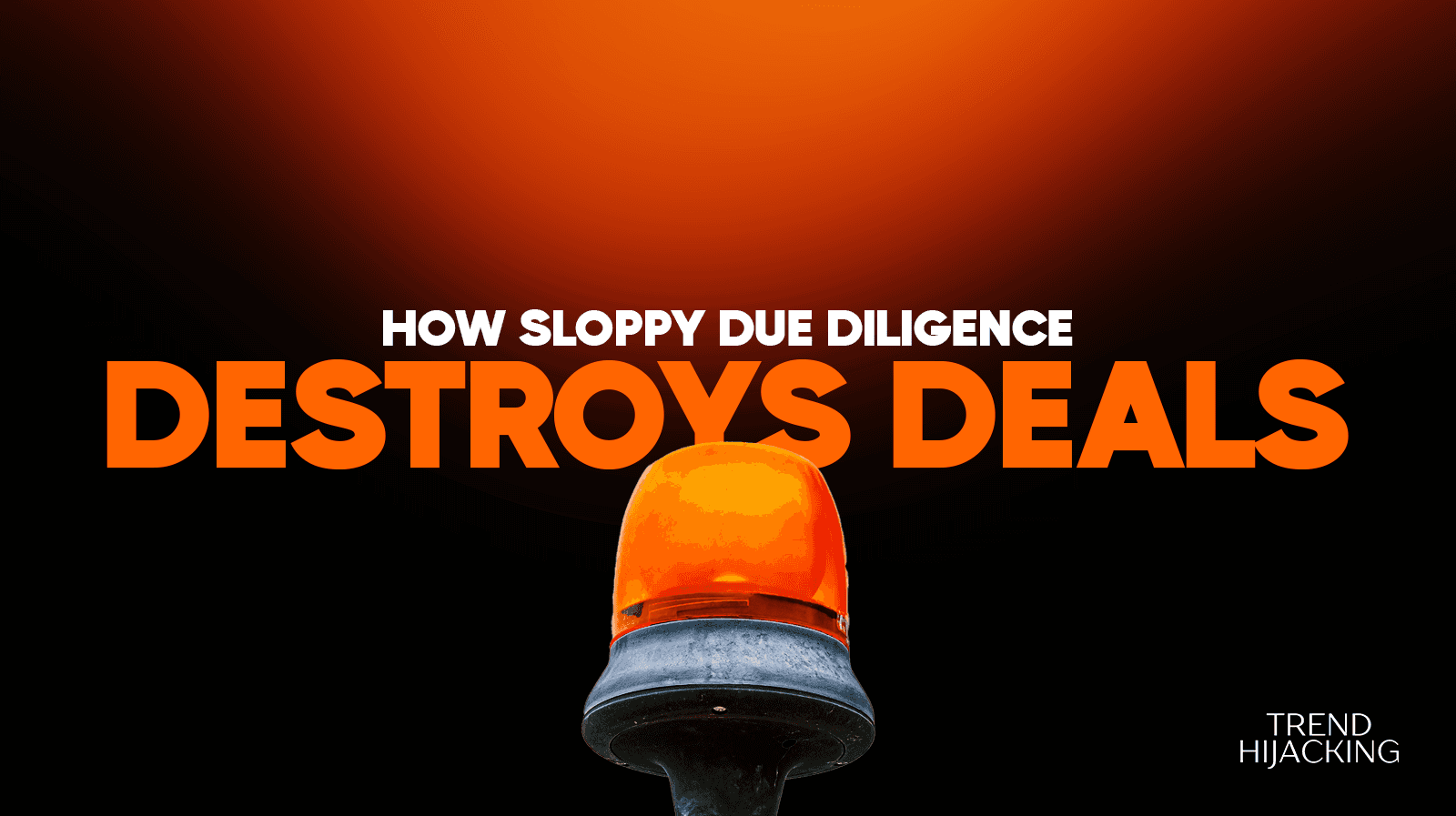9 Emerging E-commerce Trends To Watch In Your Next Acquisition
Watch These 9 Trends Before Your E-commerce Acquisition:
Acquiring an e-commerce store requires you to understand where the market is heading.
Going for stores that are already riding on emerging trends can greatly boost their value and growth potential.
In other words, understanding the emerging trends will help you choose a store that’s ready for the future and save on costly upgrades after purchase.
Let’s get a closer look at the top e-commerce industry trends right below…
We Help You Buy / Build, Manage and Scale E-commerce Brands for an EXIT
E-commerce Simplified for Busy Individuals – We handle the buying, building, and scaling, so you can focus on what matters.
Growth-Focused Strategies – From sourcing to marketing, we drive growth and prepare you for a profitable exit.
Expertly Managed Exits – We build a high-value brand designed for a Lucrative exit.
#1. AI Tools Are Automating Key Operations

More online stores are using AI (artificial intelligence) than ever before.
It has proven helpful in carrying out tasks like:
Writing product descriptions
Handling customer chats, and
Running ad campaigns
The report from McKinsey & Company observes that generative AI adoption leaped from 56% of organizations in 2021 to 72% in early 2024.
Stores with AI-driven marketing and support run leaner and scale faster.
When you evaluate a store, check which AI tools it uses and whether they drive real savings or sales.
Read This Next: Automated E-commerce Store For Sale: Is It A Good Buy?
Read This Next: ChatGPT for eCommerce: Everything You Need to Know As an Online Business Owner
#2. Subscription Revenue Boosts Predictability

Stores that sell subscriptions (i.e., from monthly boxes to software plans) are known to enjoy a steady income.
We actually consider them some of the hottest e-commerce niches for acquisition you can consider today!
It’s also worth noting that the global subscription box market hit $31.85 billion in 2024 and will grow at an 18.4% CAGR to $145.82 billion by 2034 (Source).
Acquisition entrepreneurs are known to pay a premium for such businesses with recurring revenue.
This is easy to understand given that such investments remove the feast-or-famine cycle of one-time purchases.
Read This Next: Is Buying An E-commerce Business Worth It In 2025?
#3. Micro-Influencer Partnerships Lift Conversions

Micro-influencer partnerships are another emerging trend to keep in mind when looking for e-commerce businesses to buy.
While most people believe that working with big influencers is the best shot at driving engagement and sales, the opposite is actually true.
Small influencers with around 5,000–50,000 followers will help you drive higher engagement than big names.
According to a report by Influencer Marketing Hub, 43% of brands shifted budgets toward micro-influencers in 2024.
The result? Up to 84.8% of those brands found the approach effective.
Acquiring a store that already works with micro-creators will save you the setup time of building outreach programs from scratch.
#4. Mobile Commerce Commands the Majority of Traffic

If that e-commerce site isn’t built for mobile, it’s definitely NOT built for business.
Mobile optimization translates to conversion optimization.
In a world where everyone—even grandma—has a smartphone, most of your e-commerce traffic will be hitting from mobile.
Ignore that, and you're simply leaving money on the table.
As Statista explains, up to 60% of all e-commerce sales today happen on phones and tablets. This is an increase from 56% in 2018.
Therefore, if a site loads quickly and checks out smoothly on mobile, it will win customers.
When you inspect a store, be sure to test its mobile site on different devices.
A clean, fast mobile experience means you inherit a site that converts well on the go.
Read This Next: How to Create an Engaging E-commerce Website
We Help You Buy / Build, Manage and Scale E-commerce Brands for an EXIT
E-commerce Simplified for Busy Individuals – We handle the buying, building, and scaling, so you can focus on what matters.
Growth-Focused Strategies – From sourcing to marketing, we drive growth and prepare you for a profitable exit.
Expertly Managed Exits – We build a high-value brand designed for a Lucrative exit.
#5. Buy-Now-Pay-Later Drives Higher Order Value

BNPL (Buy Now Pay Later) is also a must-watch trend when hunting for an e-commerce store to acquire.
Today, top BNPL options like Klarna, Afterpay, and Affirm allow your customers to split their payments into smaller chunks.
And this helps make big purchases feel more affordable for all your customers.
Before you doubt it, this trend is catching on quite fast.
Numbers don’t lie:
The U.S. BNPL transactions jumped to a whopping $133 billion in 2024 alone. This was 14% from $116 billion in 2023 (Source).
Online stores that offer these flexible payments often see their average order values rise by 20–30%.
So, if you acquire an online store that supports BNPL, you'll be instantly tapping into that boost.
This is a simple way to encourage your customers to spend more without running extra promos.
#6. Social Commerce Fuels Direct Sales

You also can’t afford to miss the wave that is social commerce—it’s becoming a major revenue driver.
In simple terms, social commerce refers to a new trend where shoppers are placing orders directly on social apps such as Instagram, TikTok, and Facebook.
Data from Influencer Marketing Hub shows that Social commerce generated $571 billion in global sales in 2023 (this accounts for approx. 18.5% of all online sales).
A store with built-in Instagram, TikTok, or Facebook selling features means it’s already positioned to meet customers exactly where they spend their time.
This readiness can help you enjoy faster, more consistent revenue growth after acquisition.
#7. Personalization Creates Customer Loyalty

Personalization isn’t just a nice-to-have feature for an e-commerce store—it’s what customers expect.
In fact, 80% of consumers say they’re more likely to make a purchase when an e-commerce site personalizes their experience, according to Epsilon.
Personalization in e-commerce involves things like:
Personalized product recommendations: Recommend products to an individual based on browsing history, past purchases, or similar customer behavior.
Targeted email marketing: Use names, relevant product suggestions, and timing based on individual activity.
Dynamic website content: Tailor your website banners, landing pages, or emails to individual users.
Behavioral retargeting ads: Show ads based on abandoned carts, viewed products, or search behavior.
Customized search results: Re-rank the search results based on user preferences or behavior.
All these simple tweaks can make a big difference in your customers’ shopping experience.
If the e-commerce store you’re considering already has these systems in place, you’re inheriting a setup that encourages repeat purchases and builds long-term customer loyalty.
This is no doubt a powerful way to boost the lifetime value right out of the gate.
#8. Sustainability Commands a Premium

Yes! Sustainability isn’t just good for the planet—it’s good for business.
Eco-friendly brands often enjoy stronger customer loyalty and the ability to charge premium prices.
As Ashton Manufacturing explains, up to 66% of global consumers— and a whopping 73% of Millennials— say they're willing to pay more for sustainable products.
When evaluating an e-commerce business on sale, keep an eye out for things like:
Eco-friendly packaging
Ethical sourcing
Clear, transparent ESG (environmental, social, and governance) claims
Acquiring a brand that’s genuinely built around sustainability resonates with today’s conscious consumers and can support higher margins from day one.
#9. Voice Commerce

Voice commerce is a fast-growing trend that adds convenience and sales lift.
Buyers who target stores with voice shopping features gain a competitive edge and tap into a market set to exceed $151 billion by 2025 (Source).
Want more proof? Consider this:
Voice-based transactions grew from $4.6 billion in 2021 to nearly $20 billion in 2023 (Source).
Growth of this trend stems from rising smart speaker use—over 4.2 billion digital voice assistants were in use globally by 2023, according to Number Analytics—and strong consumer adoption, with 26% of users making voice purchases (Synup).
Integrating voice checkout and search in your store will boost convenience and sales.
As a savvy buyer, we advise you to look for listings with voice features in place or easy to add to capture this accelerating channel.
Read This Next: Voice Search and E-Commerce: Preparing Your Store for Voice-Activated Shopping
Why Are E-commerce Trends Important?

E-commerce trends highlight shifts in consumer behavior and technology.
For example, mobile shopping now accounts for over 60% of online sales, showing the need for mobile-friendly websites.
Similarly, the rise of social commerce, with platforms like Instagram and TikTok enabling direct purchases, opens new sales channels for businesses.
Understanding these trends helps you identify stores that are already aligned with current consumer preferences.
This alignment can reduce the need for significant post-acquisition adjustments and can lead to quicker returns on investment.
Moreover, staying informed about trends like AI-driven personalization or sustainable practices can help you select businesses that are more likely to thrive in the future market landscape.
Overall, being aware of e-commerce trends is crucial for making informed acquisition decisions that match both current market demands and future growth opportunities.
Frequently Asked Questions About E-commerce Trends:

Here are answers to some of the most common questions about emerging trends and technologies in the e-commerce industry:
What are the latest trends in e-commerce?
Some of the latest trends in e-commerce include personalized shopping experiences, voice commerce, subscription services, AI-driven customer support, and sustainable products. Consumers are increasingly looking for convenience, quick shipping, and eco-friendly choices, while businesses focus on better data-driven marketing.
What is the future of e-commerce in the next 5 to 10 years?
In the next 5 to 10 years, e-commerce will see more automation, AI integration, and advanced customer personalization. You should expect a rise in augmented reality shopping, faster delivery options, and a stronger emphasis on sustainability as consumer demand shifts toward ethical brands and faster shopping experiences.
What is the next big thing in e-commerce?
The next big thing in e-commerce is likely to be AI-driven personalization and augmented reality (AR) shopping experiences. These technologies will create more interactive, personalized, and immersive shopping experiences, changing how customers interact with products before making a purchase.
What are the trending e-commerce technologies?
Trending e-commerce technologies include artificial intelligence (AI) for chatbots and product recommendations, augmented reality (AR) for virtual product try-ons, blockchain for secure transactions, and automation tools for inventory and customer service. These innovations enhance customer experience and streamline business operations.
Wrapping It All Up
When you buy an e-commerce store, you buy its future potential. Prioritizing stores already tapping emerging trends like AI tools, subscription models, micro-influencers, mobile optimization, BNPL, social commerce, personalization, and sustainability can help deliver faster growth and higher valuations. Focus on listings that check multiple trend boxes, and you’ll inherit a business primed for tomorrow’s market.
Ready to make a smart e-commerce acquisition? Our team can help you find a profitable store that’s already riding on the top trends we’ve discussed above. We’ll also do full due diligence and negotiate on your behalf. After you buy, we help you scale the store—aiming to boost its value up to 10× so you maximize your profit when it’s time to sell. Click here to learn more about how our program works.
A Done-For-You E-commerce Business
Discover how we Build, Launch, and Scale a 6-figure/month Business for You
Learn more
The 6-Step Blueprint to E-Commerce Acquisition
See how we Acquire, Convert, and Scale with Real Case Studies to Prove It.





















